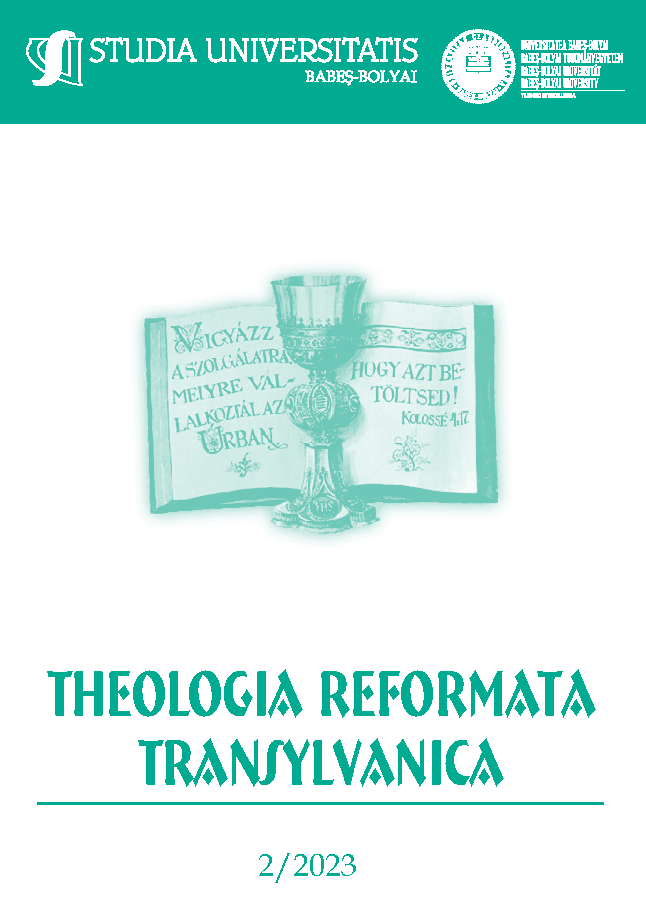Erőszakmentes kommunikáció és az erőszak terei – Kiselőadás
DOI:
https://doi.org/10.24193/subbtref.68.2.23Keywords:
violence, spaces of violence, non-violent communicationAbstract
Spaces of Violence and Communication – Workshop
Theories that seek to explain the phenomenon of violence call forth hope: perhaps violence will be eradicated one day and life will be more liveable and beautiful on this planet. But violence is an accessible and therefore very attractive position of action for all, and we no longer consider it an “occupational accident” or an “extreme case”. Anyone who wants to know what is going on when people become violent towards each other, they need to find answers to the question why people cross even strong boundaries to hurt or kill others. Why is it so hard to stop any kind of war despite the terrible consequences? What does it mean to live in “spaces of violence” (Jörg Baberowski), and what role does communication play in their formation and maintenance?
References
ALLPORT, Gordon W.(1999): Az előítélet. Budapest, Osiris Kiadó.
ARONSON, Elliot (2009): Columbine után. Az iskolai erőszak szociálpszichológiája. Budapest, Ab Ovo Kiadó.
BABEROWSKI, Jörg (2019): Az erőszak terei. Budapest, Európa Könyvkiadó.
BATÁR Levente (2009): Diskurzusok nyelvi elemzése nyelvi agresszió szempontjából. Pécs. 65. nydi.btk.pte.hu/sites/nydi.btk.pte.hu/files/pdf/BatarLevente2010.pdf (letöltés dátuma: 2023. augusztus 12.).
DOMONKOSI Ágnes (2008): A nyelvi agresszió szerepe a személyközi viszonylatokban, In: Zimányi Árpád (szerk.): Az agressziókutatásról interdiszciplináris keretben. Eger, EKF Líceum Kiadó.
DUDÁS Dóra: A szavak ereje – A verbális bántalmazás hatása a személyiségünkre. https://csalad.mandiner.hu/cikk/20170208_dudas_dora_a_szavak_ereje_a_verbalis_bantalmazas_hatasa_a_szemelyisegunkre 2023. június 7 (letöltés dátuma: 2023. június 7.).
ELIAS, Norbert (1987): A civilizáció folyamata. Szociogenetikus és pszichogenetikus vizsgálódások. Budapest, Gondolat Kiadó.
FÖLLMER, Moritz (2017): A Harmadik Birodalom kultúrtörténete. Budapest, Corvina Kiadó.
FREUD, Sigmund (1940): Totem und tabu. GW. Vol. IX. London, Imago.
FROMM, Erich (2001): A rombolás anatómiája. Budapest, Háttér Kiadó.
HUGHLINGS, Jackson: On Affections of Speech from Disease of the Brain, In: Taylor, James (szerk.): Selected Writings of John Hughlings Jackson. https://doi.org/10.1093/acprof:oso/9780195177640.003.0019 (letöltés dátuma: 2023. június 10.).
JAY, Timothy (2009): Do Offensive Words Harm People? In: Psychology. Public Policy and Law. 15. 2. 81–100. Massachusetts College of Liberal Arts.
MCDATE, Thomas W. – HAWKLEY, Louise C. – CACIOPPO, John T. (2006): Psychosocial and Behavioral Predictors of Inflammation in Middle-Aged and Older Adults, In: Psychosomatic Medicine. 68. 376–381.
PAP Kinga Katalin [é. n.]: A nyelvi agresszió a kortárs irodalomban és az ifjúság nyelvhasználatában. http://epa.oszk.hu/03200/03258/00013/pdf/EPA03258_irodalomismeret_2013_04_195-233.pdf (letöltés dátuma: 2023. október 4.).
RANSCHBURG Jenő (2007): A fizikai és a pszichológiai erőszak, In: Pándy Mária – Ranschburg Jenő – Popper Péter: Láthatatlan ellenségek. Budapest, Saxum Kiadó. 59–63.
RAUCHFLEISCH, Udo (1992): Allgegenwart von Gewalt. Göttingen, Vandenhoeck & Ruprecht.
ROSENBERG, Marshall B. (2001): A szavak ablakok, vagy falak. Az erőszakmentes kommunikáció. Budapest, Agykontroll Kft.
SOPADE beszámolók 5 (1938) 685. In: Föllmer, Moritz: A Harmadik Birodalom kultúrtörténete. Budapest, Corvina Kiadó.
VESZELSZKI, Ágnes (2017): Verbális és vizuális agresszió online: Az internetes trollok, In: JEL-KÉP 2.
Downloads
Published
How to Cite
Issue
Section
License
Copyright (c) 2023 Studia Universitatis Babeș-Bolyai Theologia Reformata Transylvanica

This work is licensed under a Creative Commons Attribution-NonCommercial-NoDerivatives 4.0 International License.



